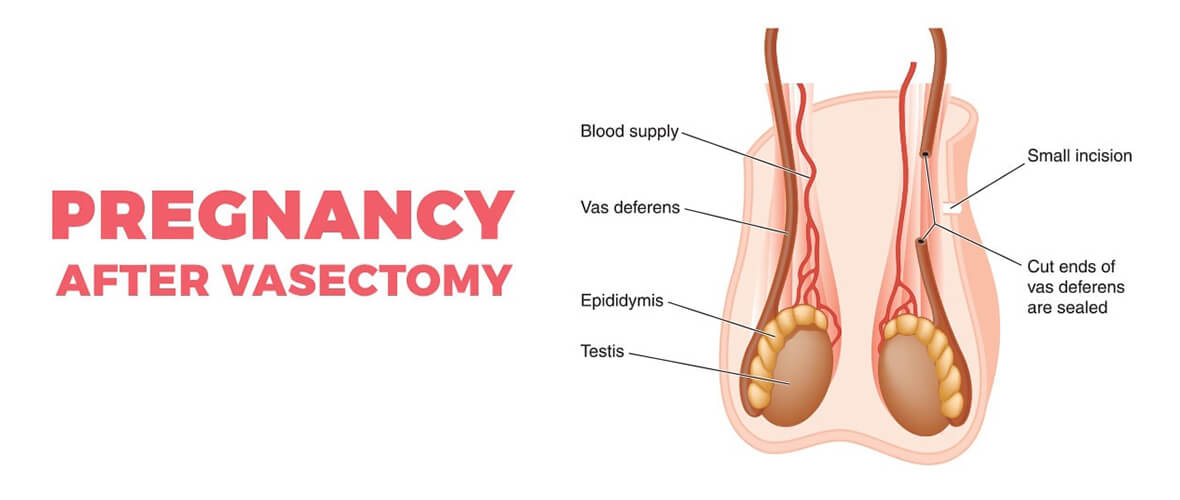Male fertility testing after a vasectomy is a normal routine procedure. The test is conducted to verify that the vasectomy procedure worked correctly and that there is no sperm present in the ejaculation fluid.
What Happens to Sperm After a Vasectomy?
According to research from the US Collaborative Review of Sterilization, nearly 1 in 100 vasectomy procedures results in a subsequent pregnancy. This number is exaggerated to the actual success rate of the procedure. The majority of these pregnancies occur during the first few weeks after the procedure when all of the currently existing sperm have not been expelled. Patients should use contraception during the first 20 ejaculations as well as confirming the procedure worked through male fertility testing.
When should male fertility testing be done following a Vasectomy?
It normally takes several weeks before your sperm will be completely absent in the ejaculate fluid. According to Johns Hopkins Medicine, 85% of men will show no sperm in their ejaculate fluid after a 10 week period following the procedure. Additionally, men should have at least 20 ejaculations during that timeframe. It is important to note that the American Urologist Association recommends that patients avoid ejaculation during the first week after the procedure.
Testing may be completed after 20 ejaculations have occurred over a 10 week period following the completion of the procedure. However, it is common to wait 12 weeks to increase the probability of an accurate result.
If semen is present during testing at your 10 week follow up, testing should reoccur 2 to 4 weeks later. Couples should use a condom throughout all of these weeks if the desire is to avoid a potential pregnancy.
Additional Testing Options
Vasectomy is considered a permanent form of contraception and is 99% effective at preventing pregnancy. A vasectomy does nothing to prevent the transmission of a sexually transmitted infection.
However, in no more than 1 in 2000 procedures, the sperm and vas deferens will create a new path establishing a new opportunity for pregnancy to occur.
Additional male fertility testing can be conducted at annual or periodic intervals to confirm the procedure continues to work as expected.
Where can male fertility testing be done after a Vasectomy?
Male fertility testing is usually part of a normal post-procedure follow up with your urologist. The sample will be collected at the office of your urologist and then evaluated for the presence of sperm.
Compliance is a challenge with many men forgoing any follow up procedure believing that the procedure was successful. The probability of a successful procedure is in their favor but testing is recommended to be certain.
At-Home Sperm Tests
Male fertility testing can be done in the privacy of your home with at-home male fertility tests. You may also ask your urologist about a home male fertility test during your procedure or pre-procedure consults. It is possible your urologist may have an at-home test you can use to evaluate the success of the vasectomy yourself.
SpermCheck is a corporate sponsor with the American Pregnancy Association and they provide an at-home sperm test. You can learn more here.
At-home male fertility tests are often the preference for men who prefer not to go to the doctor’s office or find the process embarrassing. Testing to confirm things have worked and continue to work are recommended, and at-home male fertility tests increase the probability that men will be compliant.
Compliance with follow up testing to confirm the procedure worked and avoid future pregnancies is important. If there are any questions, you should contact your urologist and follow up.
Want to Know More?
Compiled using information from the following sources:
1. American Urological Association, Vasectomy, Retrieved August 2018.
1. Johns Hopkins Medicine, Health Library, Vasectomy, https://www.hopkinsmedicine.org/healthlibrary/conditions/mens_health/vasectomy_85,P0073
1. Retrieved August 2018.






